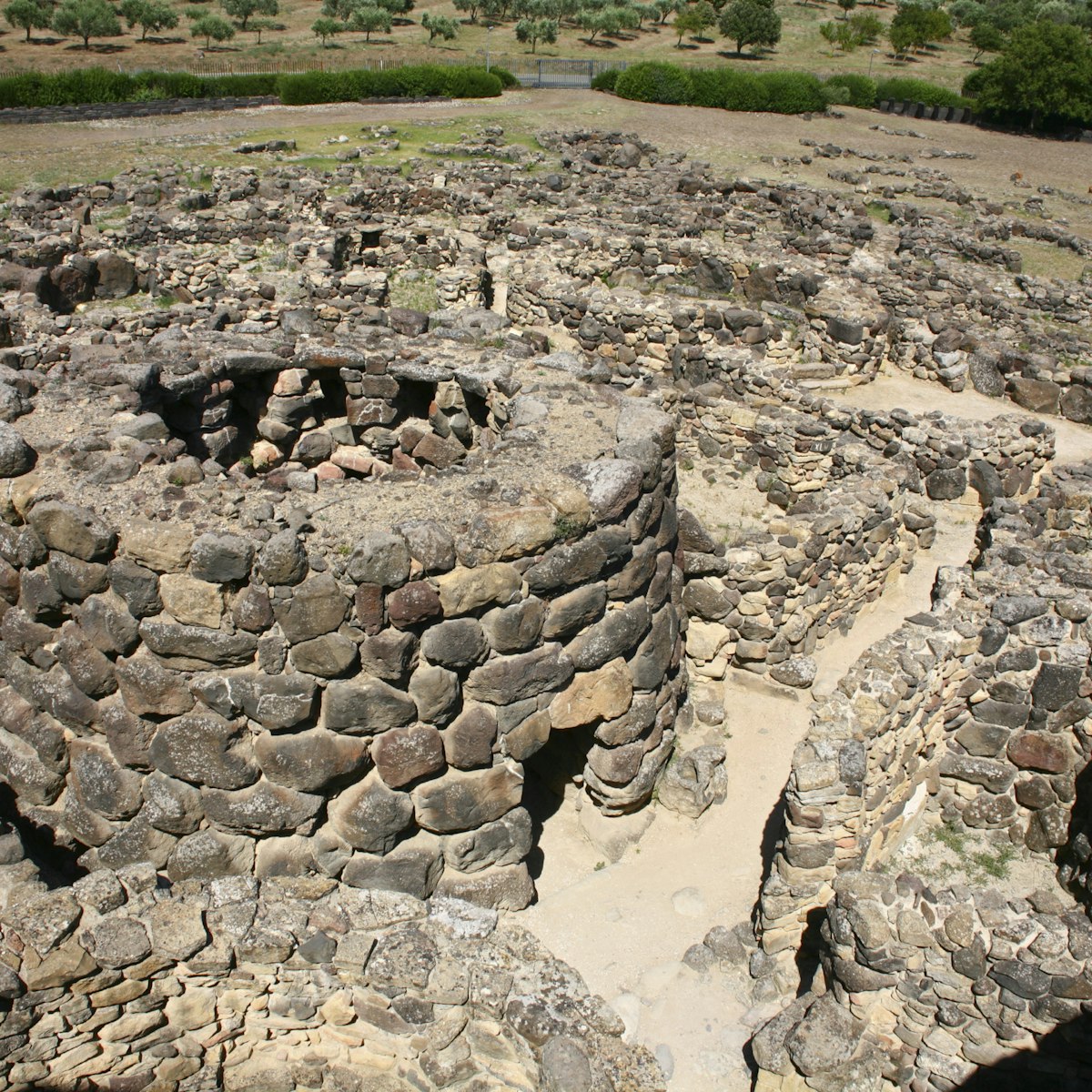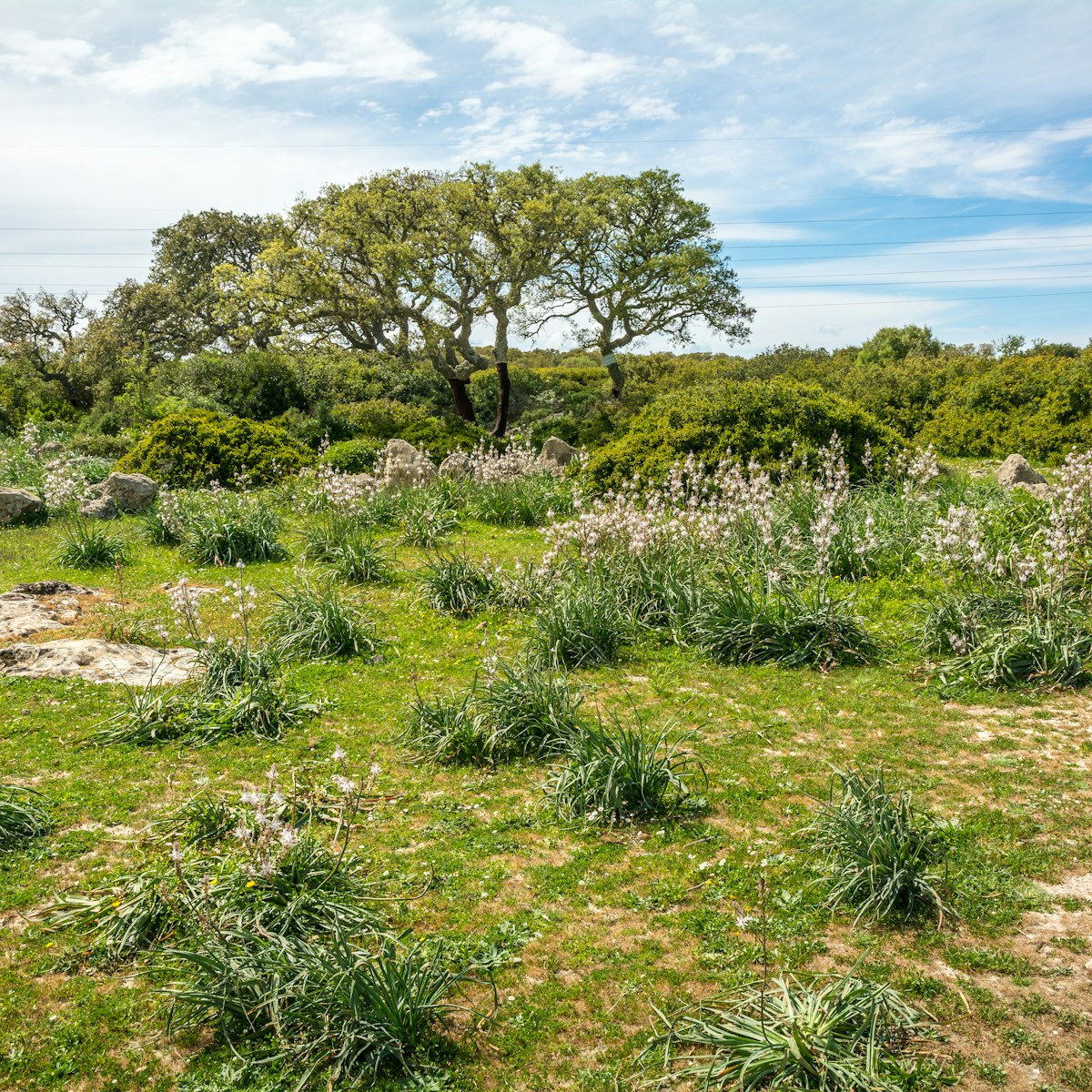This attractive museum complex occupies the 16th-century residence of the Spanish Zapata family, La Marmilla's 16th-century rulers. The whitewashed villa was originally built over a 1st-millennium-BC nuraghic settlement, which has been skilfully incorporated into the museum's display. You'll also find artefacts from the Nuraghe Su Nuraxi, a section dedicated to the Zapata dynasty, and a small collection of traditional musical instruments.
Casa Zapata
Southwestern Sardinia
Lonely Planet's must-see attractions

0.54 MILES
In the heart of the voluptuous green countryside near Barumini, the Nuraghe Su Nuraxi is Sardinia’s sole World Heritage Site and the island’s most visited…

2.37 MILES
Rising above the rolling green landscape, La Giara di Gesturi is a high basalt plateau famous for its wild horses and uncontaminated natural beauty. The…

28.59 MILES
Just off the SS131 north of Oristano, the sanctuary at Santa Cristina is an important nuraghic complex. The nuraghic village's extraordinary Bronze Age…

25.77 MILES
Oristano’s elegant outdoor salon sits at the southern end of pedestrianised Corso Umberto I. An impressive, rectangular space, it comes to life on summer…

24.27 MILES
This landmark Romanesque church is one of Sardinia's architectural jewels. Dating to the early 12th century, it sports a severe sandstone exterior…

29.53 MILES
Cabras' cultural highlight is the Museo Civico, and the real superstars here are the so-called Giants of Monte Prama, a series of towering nuraghic…

27.03 MILES
High above Ulassai, the mammoth Grotta di Su Marmuri is a 35m-high cave complex. Visits are by guided tour only (minimum of four people), which take you…

5.55 MILES
Beyond the small village of Serri, the Santuario Santa Vittoria is one of Sardinia's most important nuraghic settlements. It was first studied in 1907 and…
Nearby Southwestern Sardinia attractions
0.09 MILES
Guarding the crossroads in Barumini's village centre, this squat 17th-century church sports a crenellated facade punctuated by an unusual octagonal rose…
0.54 MILES
In the heart of the voluptuous green countryside near Barumini, the Nuraghe Su Nuraxi is Sardinia’s sole World Heritage Site and the island’s most visited…
3. Parco Sardegna In Miniatura
1.07 MILES
A kilometre west of Barumini, the Parco Sardegna in Miniatura is a family-friendly theme park centred on a miniature reconstruction of Sardinia. Other…
1.79 MILES
Lording it over the electric green landscape, the scant ruins of the 12th-century Castello di Marmilla sit atop a perfectly pyramidal hill near the hamlet…
2.32 MILES
Before you head up to the Giara, check out the Chiesa di San Pietro in Tuili. The pride and joy of this much-altered 15th-century church is its colourful…
6. Chiesa di Santa Teresa d'Avila
2.34 MILES
On the Giara's southeastern flank, the town of Gesturi is dominated by the 30m-high bell tower of the Chiesa di Santa Teresa d'Avila. The faithful flock…
2.37 MILES
Rising above the rolling green landscape, La Giara di Gesturi is a high basalt plateau famous for its wild horses and uncontaminated natural beauty. The…
5.55 MILES
Beyond the small village of Serri, the Santuario Santa Vittoria is one of Sardinia's most important nuraghic settlements. It was first studied in 1907 and…